TOP 13 Best Technical Writing Books | Learn the Technical Writing Craft [Bookmark Now!]
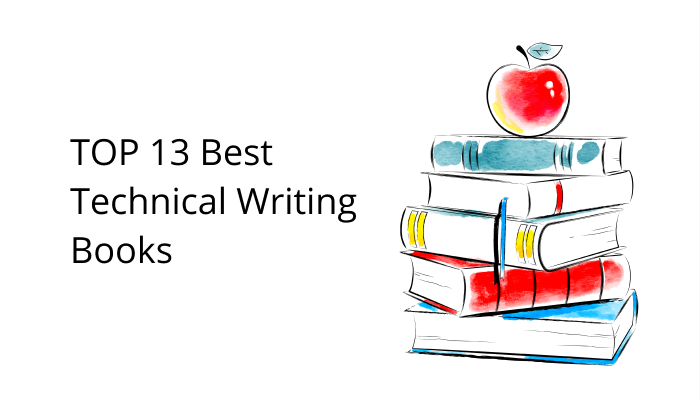
Technical Writing Books
If you’re looking for suggestions on the best books on technical writing, look no further — herein, we’ve covered the TOP 13 technical writing books of all time. See if we’ve missed something and comment below with your suggestions.
Technical Communication | Mike Markel
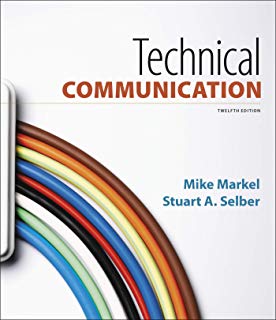
Technical Communication – Mike Markel
Author’s Twitter: https://twitter.com/mikemarkel
Publisher: Bedford/St. Martin’s, 12th Edition
Publication date: October 14, 2017
Pages: 768 pages
This is one of the most commonly used textbooks in an academic setting. Using student-friendly language and accessible visual design, Markel shows how different types of technical documentation work and where to use each. Excellent and updated examples demonstrate effective techniques and offer opportunities for deeper analysis, while interactive examples strive to engage students in real-world scenarios. Whatever format or type of technical communication you’re going to employ at your job — you can be sure, it’s covered in this book. People who complained almost always referred to the physical condition of the book they received off Amazon, which is not the problem with the writing in itself, but something you should be aware of nonetheless.
The Essentials of Technical Communication | Elizabeth Tebeaux, Sam Dragga
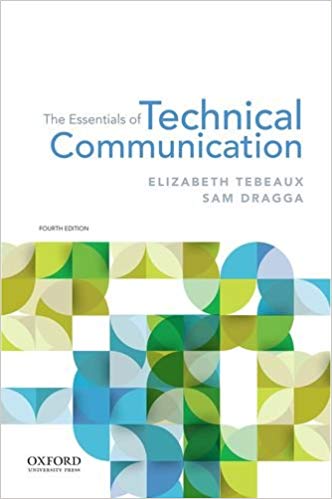
The Essentials of Technical Communication — Elizabeth Tebeaux Sam Dragga
Publisher: Oxford University Press, 4th edition
Publication date: December 15, 2017
Pages: 432 pages
The Essentials of Technical Communication is another highly recommended and widely used textbook, which is referred to by American academia as pedagogically effective with a good mix of theory and practical examples that are applicable to the present corporate environment. The book contains a wealth of real-world documents and scenarios that will help you understand the essentials of technical communications and deep-dive into the world of technical documentation. There are numerous case studies that contextualize documents and provide an ample number of examples of initial first drafts and complete full-fledged documents. Quick tips, guidelines, checklists, exercises, appendixes, chapter overviews, self-tests, and so on — all summarize important information not to be overlooked but reiterated and repeated throughout the semester of studies. Apart from writing, the book deals with document design and how it should be approached for the benefit of a final reader or end-user.
Technical Writing 101 | Alan S. Pringle, Sarah S. O’Keefe
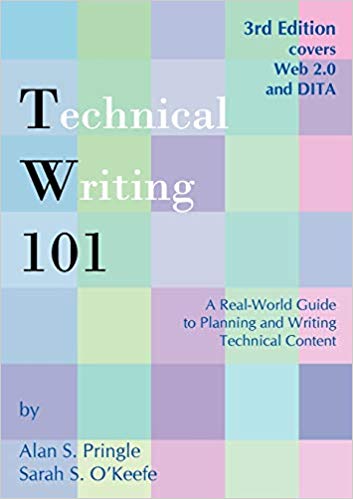
Technical Writing 101 A Real-World Guide to Planning and Writing Technical Content 3rd Edition
Author’s Twitter: https://twitter.com/alanpringle
Publisher: Scriptorium Publishing Services, Inc; 3rd Edition
Publication date: May 1, 2009
Pages: 330 pages
Another classic textbook that deals with both printed and online content and describes the entire development, process-planning, writing, visual design, editing, indexing, and production of technical documentation. There will be tips on how to write simple and clear technical texts that could be seamlessly translated into multiple other languages. The third edition also features information on the Darwin Information Typing Architecture (DITA) standard for structured authoring, as well as lots of information on using newly available technologies and the impact they have on technical communication.
Technical Writing Process | Kieran Morgan & Sanja Spajic
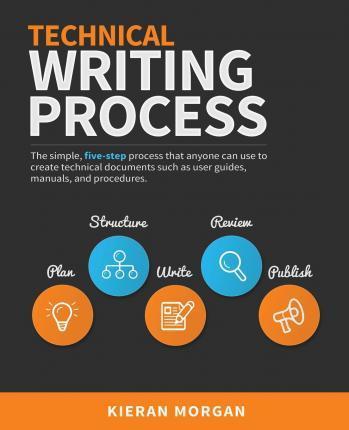
Technical Writing Process – Kieran Morgan & Sanja Spajic
Publisher: Better On Paper Publications, 1st edition
Publication date: March 3, 2015
Pages: 260 pages
Technical Writing Process is a nice little handbook that covers the very basics of technical communication and the technical writing process. It’s a fantastic guidebook for non-technical writers or beginner professionals. The book rests upon a five-step process that can be used to create any type of technical documentation, from user guides to procedures: planning, structuring your document, writing, reviewing, and publishing. The appendix at the back of the book is packed with lots of useful templates of documents that you’ll encounter during your technical writing career. The reviewers were happy to note that they felt the book was a very helpful no-nonsense kind of a book in project management of writing. However, those who were left unimpressed said it was more for managers rather than engineers, and they felt like most of it was really beating around the bush. So, if you’re already a technical writer or senior engineer, perhaps it’s best to look for another book.
The Insider’s Guide to Technical Writing | Krista Van Laan
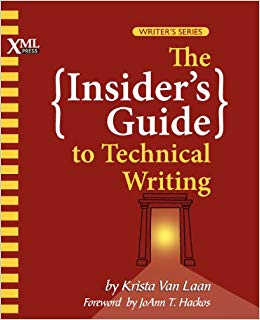
The Insider’s Guide to Technical Writing — Krista Van Laan
Publisher: XML Press; 1 edition
Publication date: May 15, 2012
Pages: 346 pages
Again, if you’re just starting out or would like to break into the field, then this book might be something you’re looking for. The book covers such questions as what it actually takes to be a technical writer, what skills and tools you need to get started, how to manage different development processes, how to create different types of documentation (from style guides to user manuals and indexes), how to handle the ups and downs of being a technical writer, where else to look for information to advance in your career.
Managing Your Documentation Projects | JoAnn T. Hackos
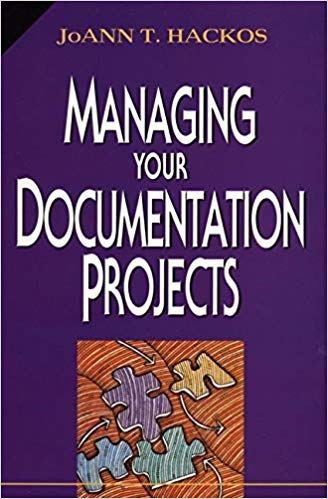
Managing Your Documentation Projects — JoAnn T. Hackos
Publisher: Wiley; 1 edition
Publication date: March 23, 1994
Pages: 656 pages
This is a classic textbook from a while ago, the 90s. Nevertheless, it has been and continues to be extensively praised by many. This is perhaps the only book devoted to technical publication project management with proven strategies and techniques for producing high-quality, usable documentation. The book is written by a seasoned top documentation design and project management consultant with a proven excellent track record in such corporations as IBM and Hewlett-Packard. So, with this book, you’re getting clear-cut rational guidelines to managing every phase of the project from planning and developing to production and project evaluation. The book contains scores of templates, checklists, summaries, and forms, dozens of real-life case studies, scenarios, and techniques for virtually every existing type of technical communication. While most of the reviewers found the book to be quite an excellent resource on project management and collaborative management of documentation projects, others thought it could be way shorter and a little more structured.
Technical Writing: A Practical Guide for Engineers and Scientists | Phillip A. Laplante
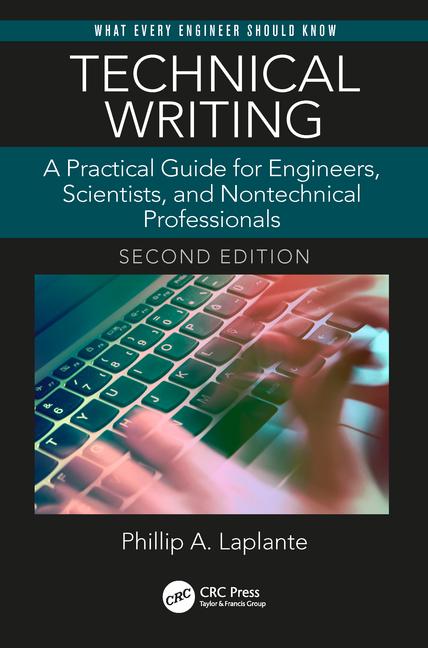
Technical Writing A Practical Guide for Engineers and Scientists — Phillip A. Laplante
Publisher: CRC Press; 2 edition
Publication date: July 27, 2018
Pages: 300 pages
Dr. Phil Laplante, the author of the book, is Professor of Software and Systems Engineering at The Pennsylvania State University. He is a Fellow of the IEEE and SPIE and has won international awards for his teaching, research, and service. Moreover, since 2010, he has led the effort to develop a national licensing exam for software engineers. Dr. Phil Laplante has published more than 33 books and 250 scholarly papers. This is just yet another one of his many masterpieces. This guide complements traditional technical writing manuals through first-hand examples that help writers understand practical considerations behind technical communication. The second edition contains new material with additional examples, tips, tricks, and non-trivial solutions to common problems. Moreover, there’s a bit of a focus on non-technical persons working in the technology world, including those whose native language is not English. Overall, the book is peppered with personal stories, vignettes, and anecdotes that make the reading of such a book a purely enjoyable experience.
Trees, Maps, and Theorems | by Jean Luc Doumont
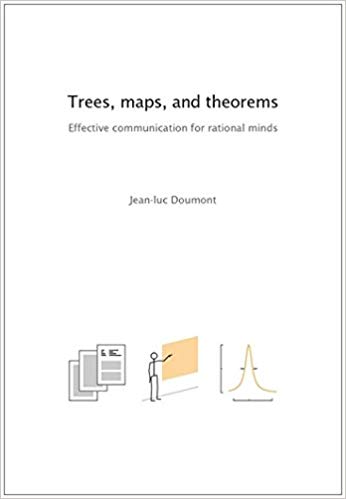
Trees, Maps, and Theorems — by Jean Luc Doumont
Publisher: Principiæ
Jean Luc Doumont is an engineer from the Louvain School of Engineering and a Ph.D. in applied physics from Stanford University; he also teaches engineers, scientists, business people the principles of effective communication. With his rational background, Jean Luc Doumont approaches technical communication in a very interesting, engineering-like way. This book is the exact confirmation that he is truly a master of the written word: it contains a lot of visuals and entertaining written examples that help students get a good grasp of the discussed principles.
The book comprises five parts: fundamentals of technical communication, then the basics of written documentation followed by oral presentations and public speaking, graphical displays and design, and finally, the application of all the discussed ideas to specific types of documents. The fundamentals primarily cover the basic universal principles of effective communication. The part about the written documentation discusses the methodology in five steps from scratch to a complete document. Effective oral presentations go over the whole process of constructing a speech from planning to delivering presentations and answering questions. The design part covers the planning, designing, and constructing optimal graphs for written documentation. And the final part about Applications shows how the guidelines in the previous parts apply to five common types of documents, namely sets of instructions, e-mail, web sites, meeting reports, and scientific posters.
Developing Quality Technical Information | Michelle Carey, Moira McFadden Lanyi, Deirdre Longo, et. al.
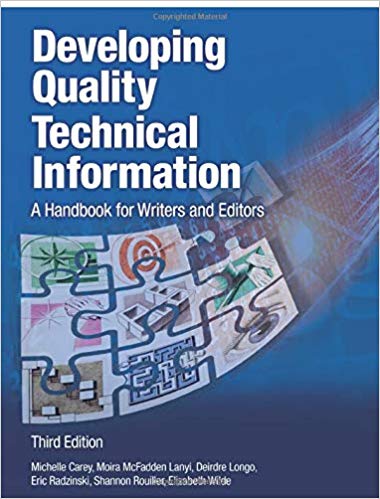
Developing Quality Technical Information — Michelle Carey, Moira McFadden Lanyi, Deirdre Longo, et. al.
Publisher: IBM Press; 3 edition
Publication date: June 23, 2014
Pages: 595 pages
The list of authors involved in writing this book is truly remarkable: all of them are long-standing and respected members of the information development community at IBM. Acknowledged as the number one guide to excellence in technical communication, this book covers the product interface and other technical information. The authors advocate for structuring the entire development process around users and reflecting that focus in all types of technical communication. The book teaches how to deliver information in an ordered manner by following progressive disclosure techniques, optimize content so that users can find it anywhere, streamline information for mobile delivery, and most importantly help users understand what you’ve written or what your team has developed. The book suits both new and mid-career technical writers. Many reviewers named it as “the best in technical communication.”
Kaplan Technical Writing: A Comprehensive Resource for Technical Writers at All Levels | by Carrie Hannigan, Carrie Wells, Carolyn Stevenson, et. al.
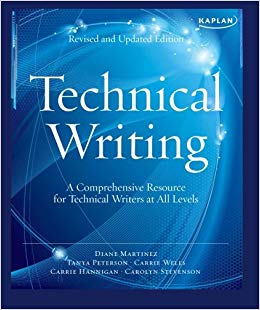
Kaplan Technical Writing A Comprehensive Resource for Technical Writers at All Levels — by Carrie Hannigan, Carrie Wells, Carolyn Stevenson, et. al.
Publisher: Kaplan Publishing; 2 edition
Publication date: December 7, 2010
Pages: 672 pages
This is Kaplan’s textbook for technical writers prepared by the instructors from Kaplan University. The manual includes detailed and comprehensive information on how to plan, organize, draft, and style technical material. Kaplan Technical Writing textbook can become your go-to destination for writing advice and a perfect desk reference for professionals and newbies alike. The book covers the full process of preparing technical documentation from planning to presentation, as well as the intricacies of preparing different types of technical documents including writing for a digital environment.
Handbook of Technical Writing | by Gerald J. Alred, Walter E. Oliu, Charles T. Brusaw
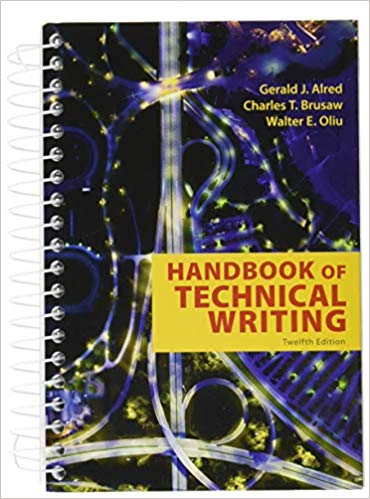
Handbook of Technical Writing — by Gerald J. Alred, Walter E. Oliu, Charles T. Brusaw
Publisher: Bedford/St. Martin’s; 12th edition
Publication date: October 5, 2018
Pages: 640 pages
This looks like the most up-to-date manual on technical writing. The Handbook was updated last year to incorporate all relevant improvements and advances in technical communication from blogs and forums to formal reports and manuals. There are hundreds of topic entries, more than ninety sample documents, at-a-glance checklists, and clear, explicit models, on how to effectively communicate through both the spoken and written word. Moreover, the book has great discourses and valuable recommendations on job search, social media, and source documentation.
Read Me First! A Style Guide for the Computer Industry | Sun Technical Publications
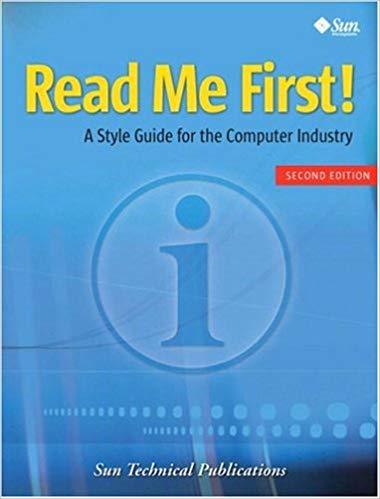
Read Me First! A Style Guide for the Computer Industry — Sun Technical Publications
Author’s Twitter: https://twitter.com/RealGeneKim
Publisher: Prentice Hall; 3 edition
Publication date: December 17, 2009
Pages: 464 pages
Read Me First is a definitive reference for technical writers, editors, and documentation managers. The updated version, the third edition, touches such subjects as creating screencasts and using screencast terminology, referencing websites, and writing for wikis. Although the book has not been updated since 2009, it’s still an award-winning guide to creating clear, consistent, and easy-to-use documentation that covers everything from grammar to writing style and even typography, design, and law. The authors, senior technical writers and editors at Sun Microsystems, share their tips, techniques, and recommendations that they have acquired for years working as technical writers and editors, writing hundreds of pages of technical documents and hiring technical personnel.
Microsoft Style Guide
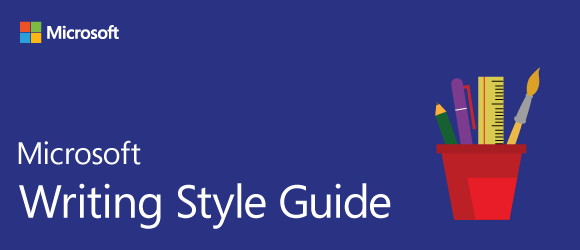
Microsoft Style Guide
The Microsoft Writing Style Guide replaces the Microsoft Manual of Style, which had been around for the last 20 years. The updated version covers some updated direction and guidance for subjects that were not around when the last edition was released. The additional material that has been added includes tips for mastering style and voice, new terms revolving around accessibility, cloud-computing, bits, and bytes, among others, as well as major topic discussions on chatbots, virtual agents, content planning, and responsive content.
Further reading on the blog:
11 Best Books on DevOps: Comprehensive Overview
A Roundup Review of the Best Deep Learning Books
“Learn Python the Hard Way”: a Detailed Book Review
Ultimate Reading List for Developers | 40 Web Development Books
Three Latest Books Every Entrepreneur Should Read | Best Business Books
TOP 5 Books about Silicon Valley that Blew Up the Internet
TOP 5 Latest Books for Hiring Best People in Tech (and Other Areas)










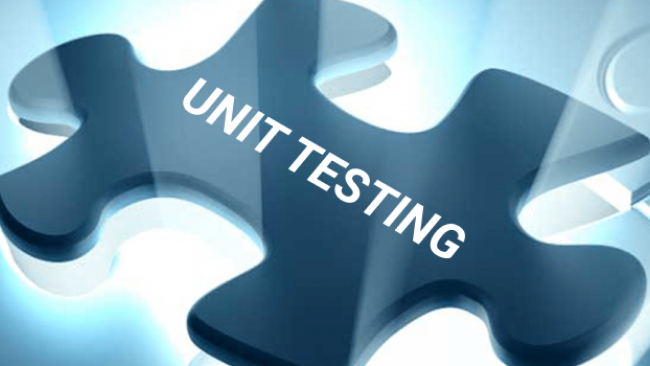
2 comments
It’s great books, thank you!
In my role as a nursing educator, incorporating theoretical foundations into the curriculum is essential. Betty Neumann’s essay on nursing theory from https://www.nursingpaper.com/examples/betty-neuman-nursing-theory-essay/ was integrated into my lecture materials because it provided a thorough exploration of her systems model. This essay not only enriched the students’ learning experience, but also deepened their understanding of complex nursing theories. NursingPaper’s ability to deliver academic content of such a high standard demonstrates their professional expertise and ability to handle a variety of writing assignments.Therefore, I confidently recommend them to your attention.